Some frogs have teeth, while others don’t have any. These teeth can be in the form of maxillary teeth that sit along the edge of the mouth, or vomerine teeth that sit at the top of the mouth. However, rather than being for chewing up prey, a frog’s teeth are simply designed to hold prey in place.

Do frogs have teeth?
It’s rather difficult to imagine a frog with a pair of pearly-whites. These slimy amphibians must have some of the gummiest smiles in the animal kingdom. Yet, surprisingly a large number of frogs do have teeth.
Frogs can have both maxillary and vomerine teeth. Maxillary teeth are located along the side of the mouth, whereas vomerine teeth are on the top of the mouth. What kind of teeth frogs have varies a great deal. Some frog have only maxillary teeth, some maxillary and vomerine and some have none at all.
Most frogs that have teeth only have them on their upper jaw. Out of around 7,000 global frog species, here is only one known frog species to have a full set of teeth both on the upper and lower jaw. However, while some frogs have teeth and some don’t, with most species it’s nearly impossible to tell, as their teeth are usually less than a millimeter in length.
It used to be thought that all frog species that lacked teeth were closely related, but genetic analysis has revealed that they aren’t. This means that frogs evolved separately many times in the past to have no teeth.
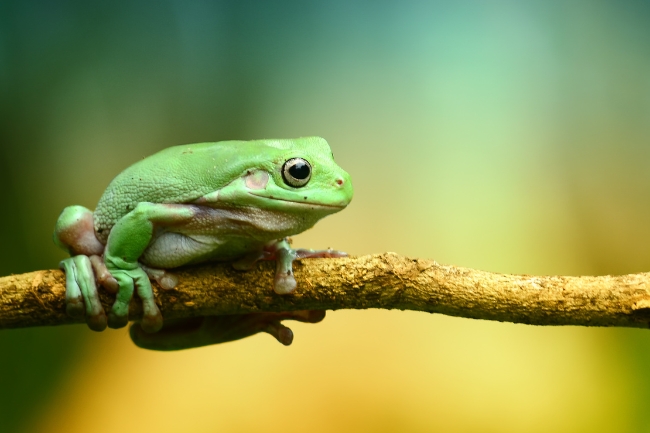
Species that lack teeth tend to be thought to specialised in small insects such as ants and termites. This is probably due to the fact that frogs don’t use their teeth to chew, instead they swallow their prey whole, and alive. The frog’s teeth, rather than being used to chop up their prey, help to hold them in place while they swallow them.
For those species that eat smaller prey, there’s no need to hold them in place. Because they are easy to swallow whole. Why go to the effort of growing teeth then, if they don’t aid in getting a nice tasty meal.
Also read: Do Frogs Have Hair? What is Frog “Hair” Exactly
5 Frogs that have teeth
There are a large number of frogs that have teeth, however, you often won’t be able to tell just by looking at them. Even if you open a frog’s mouth and stare at its jaw, you’re likely to miss the tiny teeth that are located there. Instead scientist who study frogs tend to look at their skeletons to ascertain if they have teeth or not.
Guenther’s marsupial frog
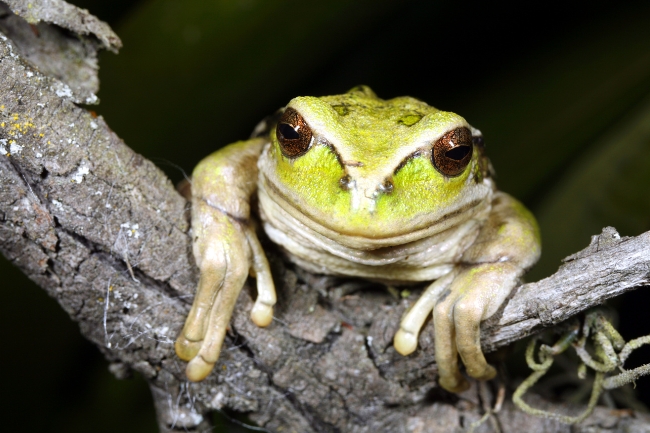
Guenther’s marsupial frog is the only known species of frog that has a full set of teeth both on the upper and lower jaw. The frog is found in Columbia and Ecuador, but has become increasingly rare due to loss of its habitat. Another strange trait of this species is that rather than laying its eggs in a pool, it carries them around in a pouch on its back, thus giving it its name as the marsupial frog.
Marsh frog
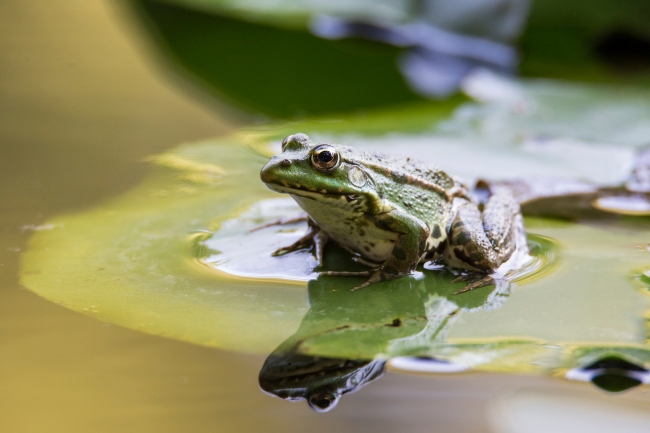
The marsh frog is a common species found throughout Europe and parts of Asia. They are the largest species that live within Europe, and are often collected to be eaten. They are generally found in and around water, which is the reason for their common name. They eat a wide range of different arthropods, including beetles and flies.
South American horned frog
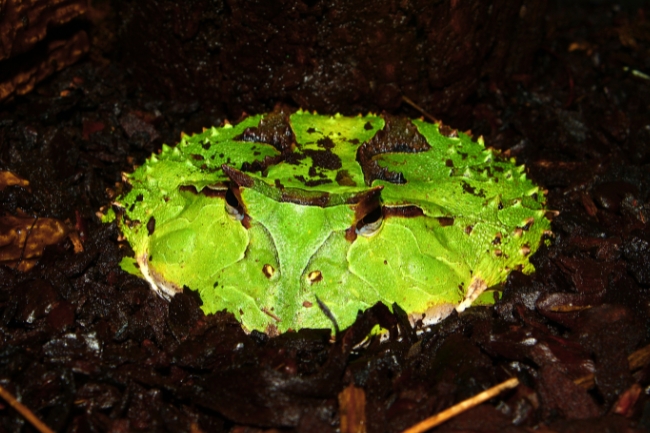
The South American horned frog is a distinctive species, with its green skin mottled with brown splodges, and the two horn-like protrusions on its head. It is one of the largest species of frog in the world, and eats a wide range of larger prey animals such as lizards, bats and tarantulas. It is also a popular pet species, and is famous for its painful bite, being one of the only frog species to be able to bite humans in any significant way.
African bullfrog
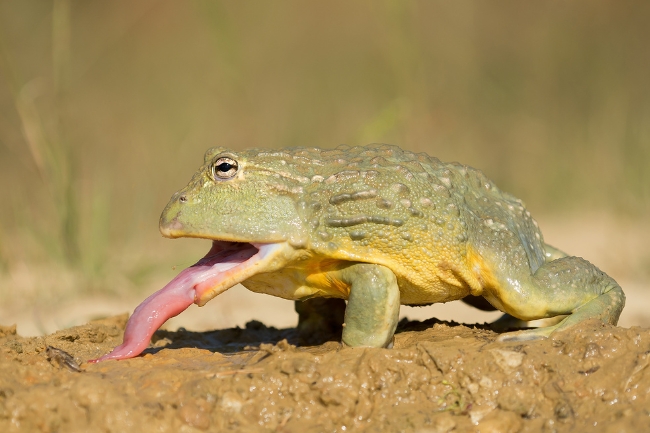
Africa bullfrogs are a large, obese-looking species, that is found across many countries in Africa, including Kenya, Namibia and Uganda. They eat a wide range of food including lizards, reptiles and rodents. As well as maxillary teeth, they have odontoids teeth, which take the form of fang-like protrusions on the bottom of their mouth. These no doubt better help them to handle their larger prey.
Green frog
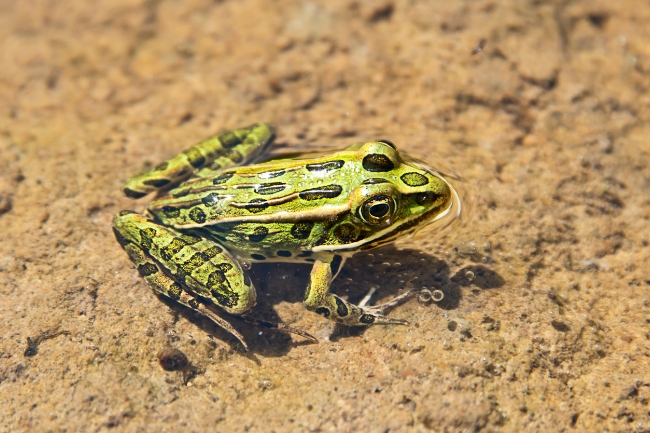
The green frog is found across Canada and the US, and is a species that has maxillary teeth on its upper jaw. It lives in ponds, ditches, lakes and other wetland habitats. It eats a range of insects, spiders and other small arthropods.
How do frogs use their teeth?
Frogs use their teeth to grip prey. This is important as they eat living animals, which will try to crawl out of their mouth or defend themselves if they are not pinned down. Once pinned the frog can swallow them, and the prey will be drowned or suffocated within the frog’s stomach.
Do frogs bite?
Most frogs can bite, but wouldn’t usually choose to bite a predator of a human’s size. This kind of defense would not work well, as their teeth aren’t big enough to cause any pain. Some larger species, such as the South American horned frog, do have a bite that humans can feel, due to their larger size and more significant teeth.
Do frog bites hurt?
Only the bites of very large species tend to cause any pain. The bites of smaller species don’t tend to affect those that are bitten.
Is frog bite dangerous?
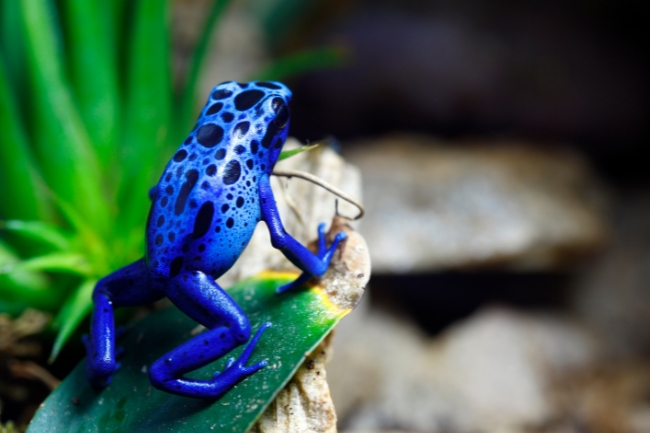
Frog bites aren’t dangerous, as they don’t contain any venom, and their teeth are too small to cause any harm. Handling some frogs can be dangerous though, as they may exude poison from their skin, such as poison dart frogs. Many of these species do not have teeth, as they prey they hunt is so small.
| Adaptation | Frog Species | Additional Information/Explanation |
|---|---|---|
| Shearing Teeth | Green Tree Frog | Green tree frogs have sharp shearing teeth for tearing prey |
| Peg-like Teeth | African Clawed Frog | African clawed frogs have peg-like teeth used for gripping prey |
A grinning frog
Frogs are amazingly diverse and numerous across the world, exploiting many different niches and surviving in the most unusual of conditions. Perhaps this is why they have been able to evolve so many different dental arrangements. Such variety benefits them in helping them to specialise towards different prey species, and therefore making them more successful and efficient hunters.
Perhaps its a good thing that these teeth are so very tiny, and not meant to inflict pain within themselves. There’s certainly something a little worrying and a small crouched figure, sat on a lilypad in a pond, only to turn to you dipping your toes in the water, with a ravenous grin.

